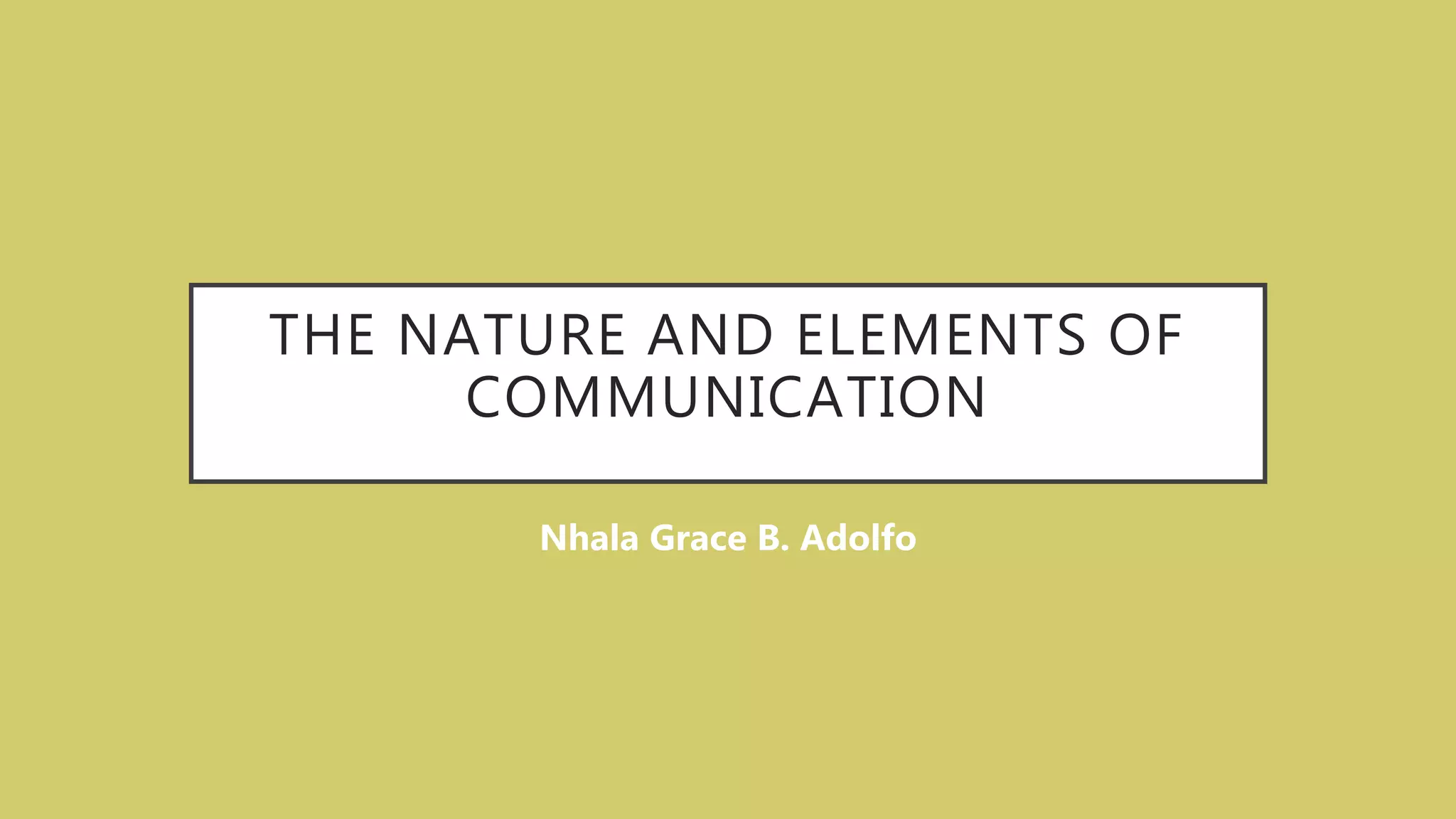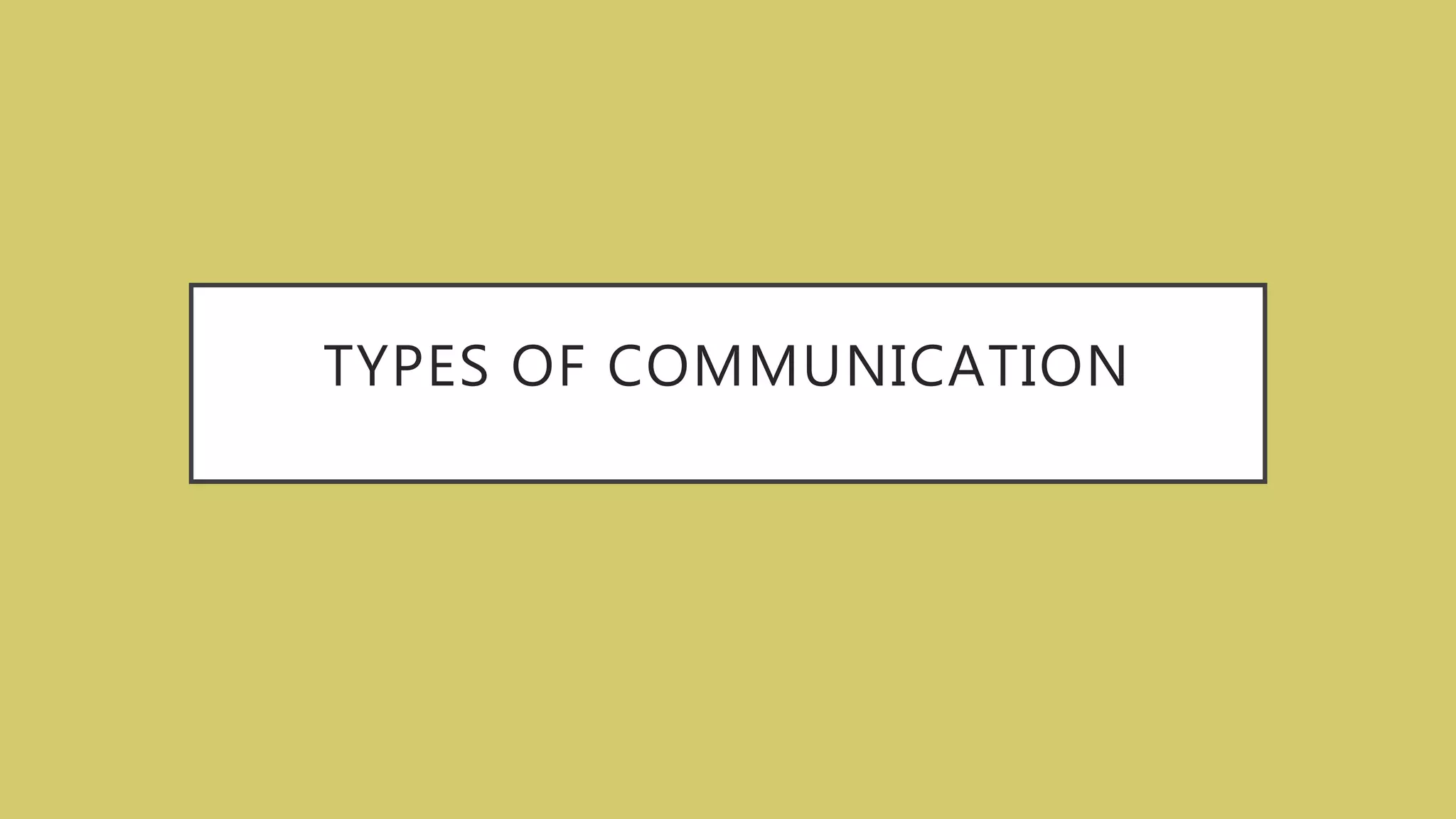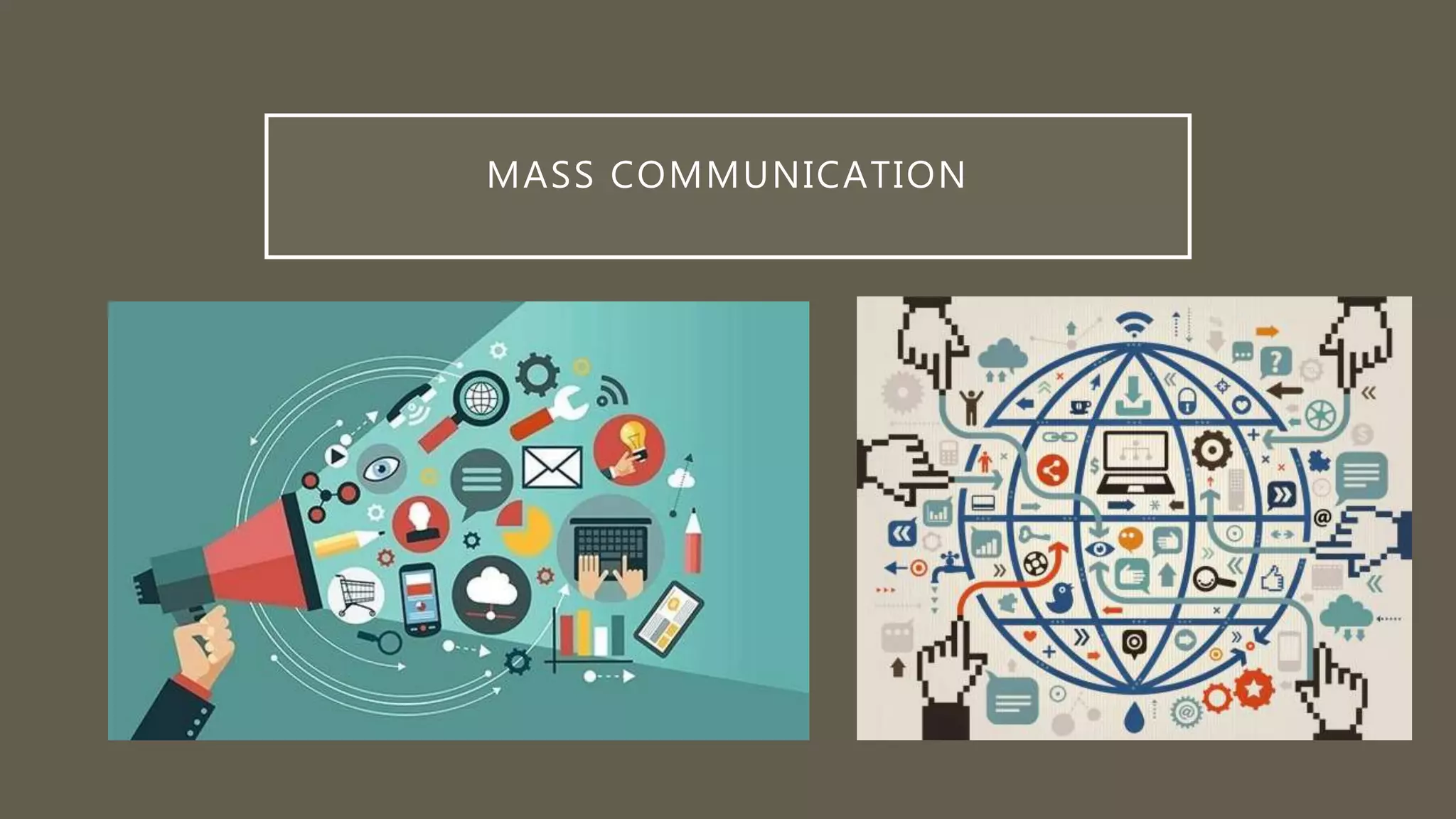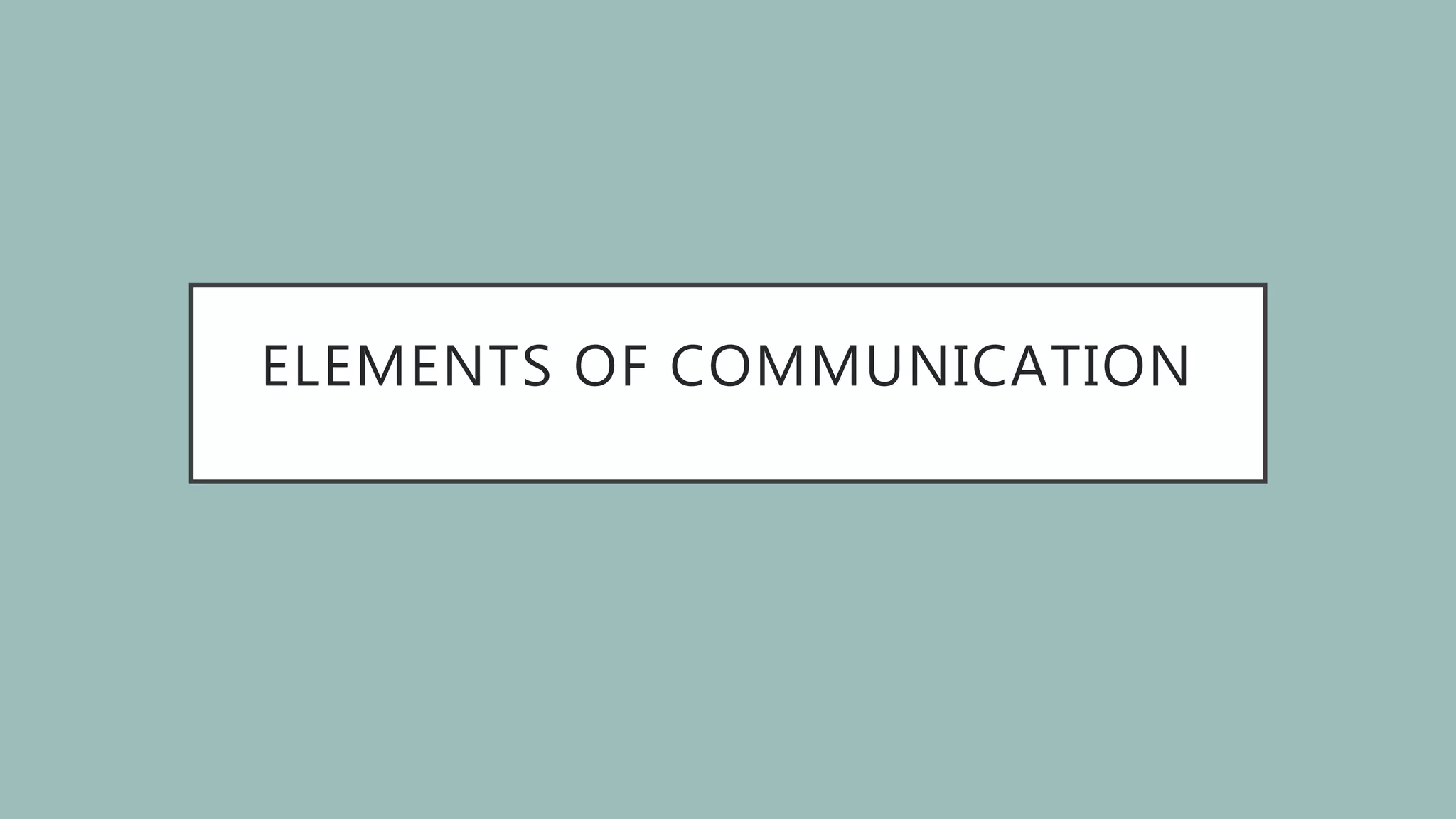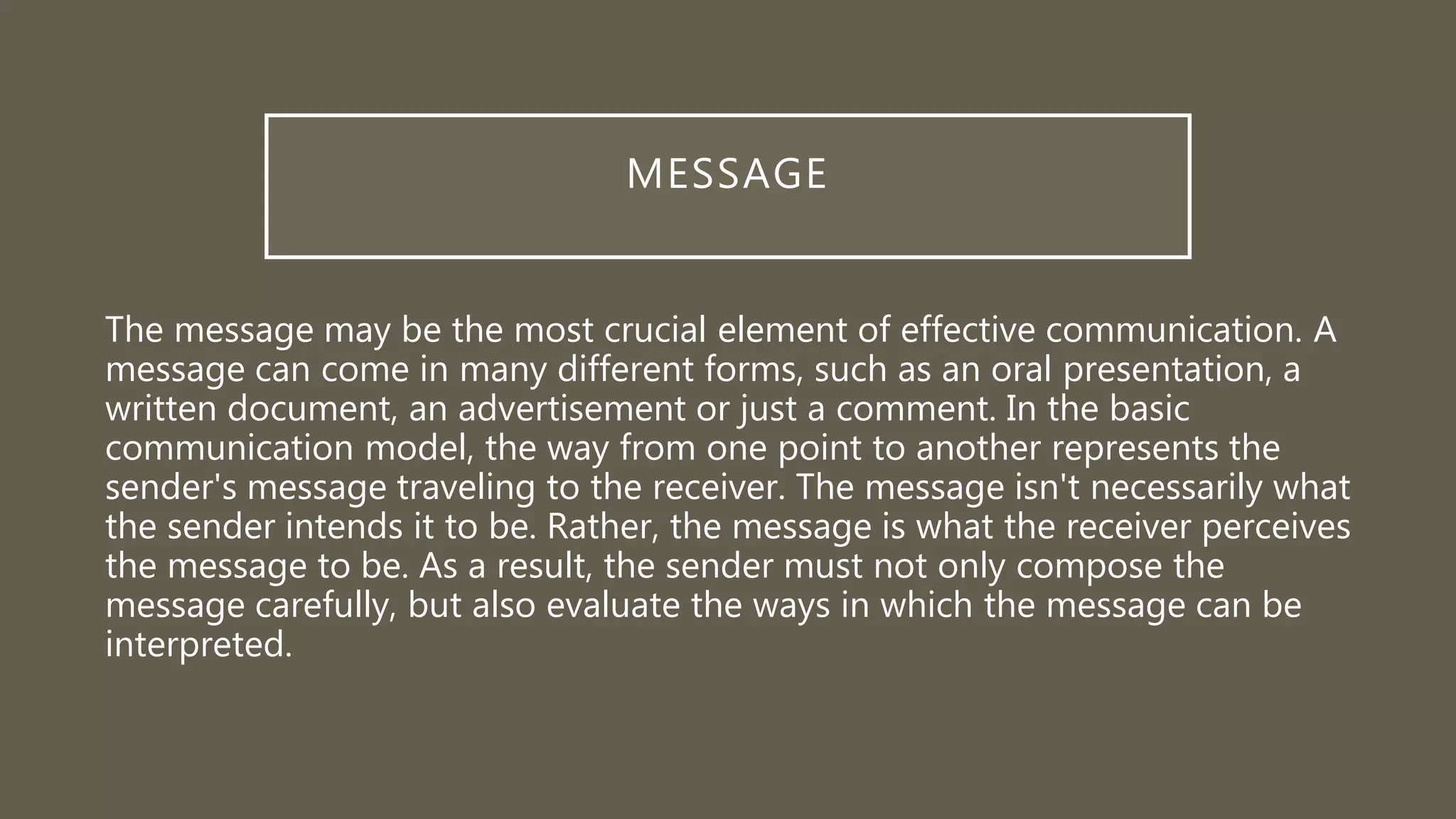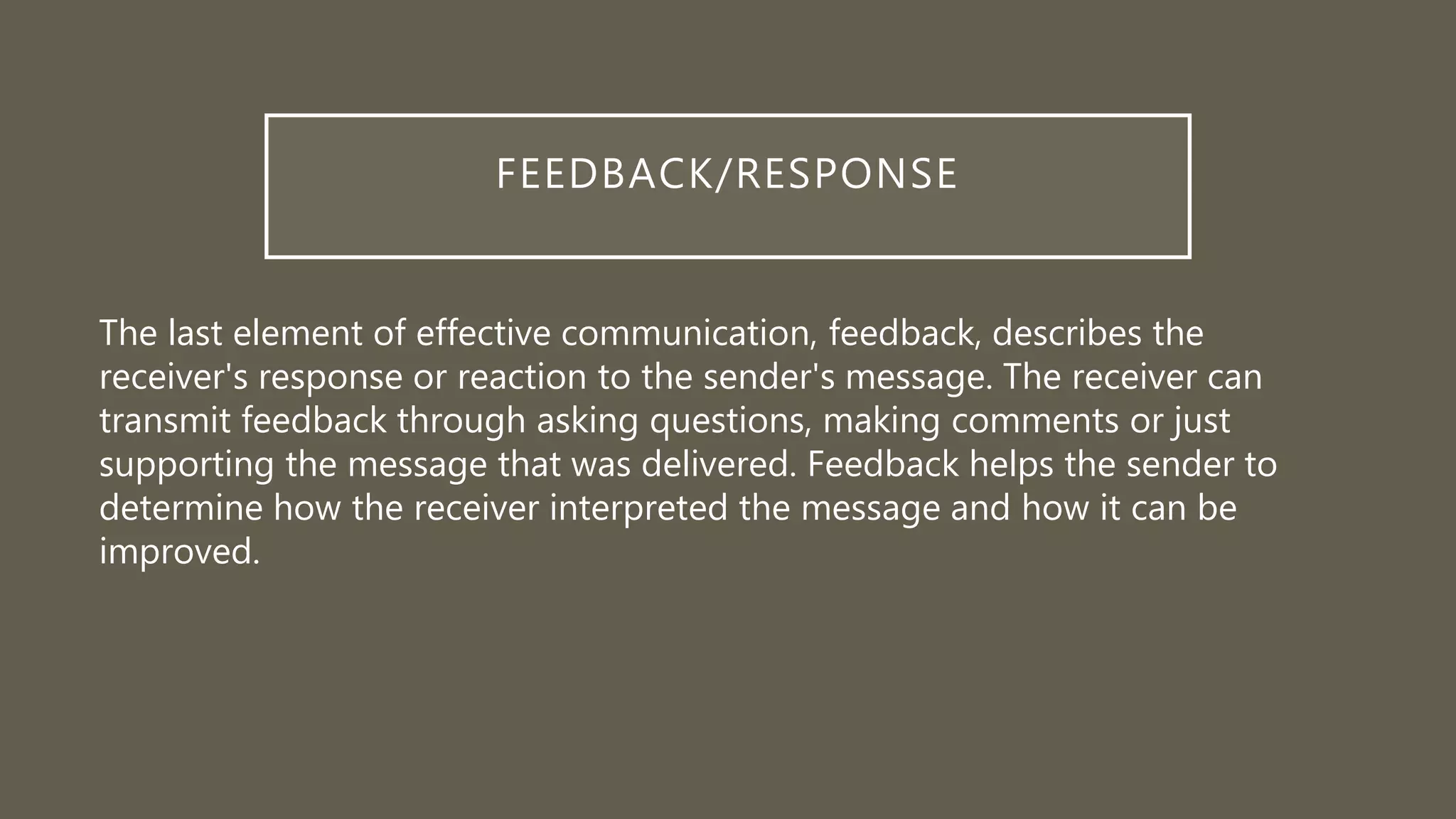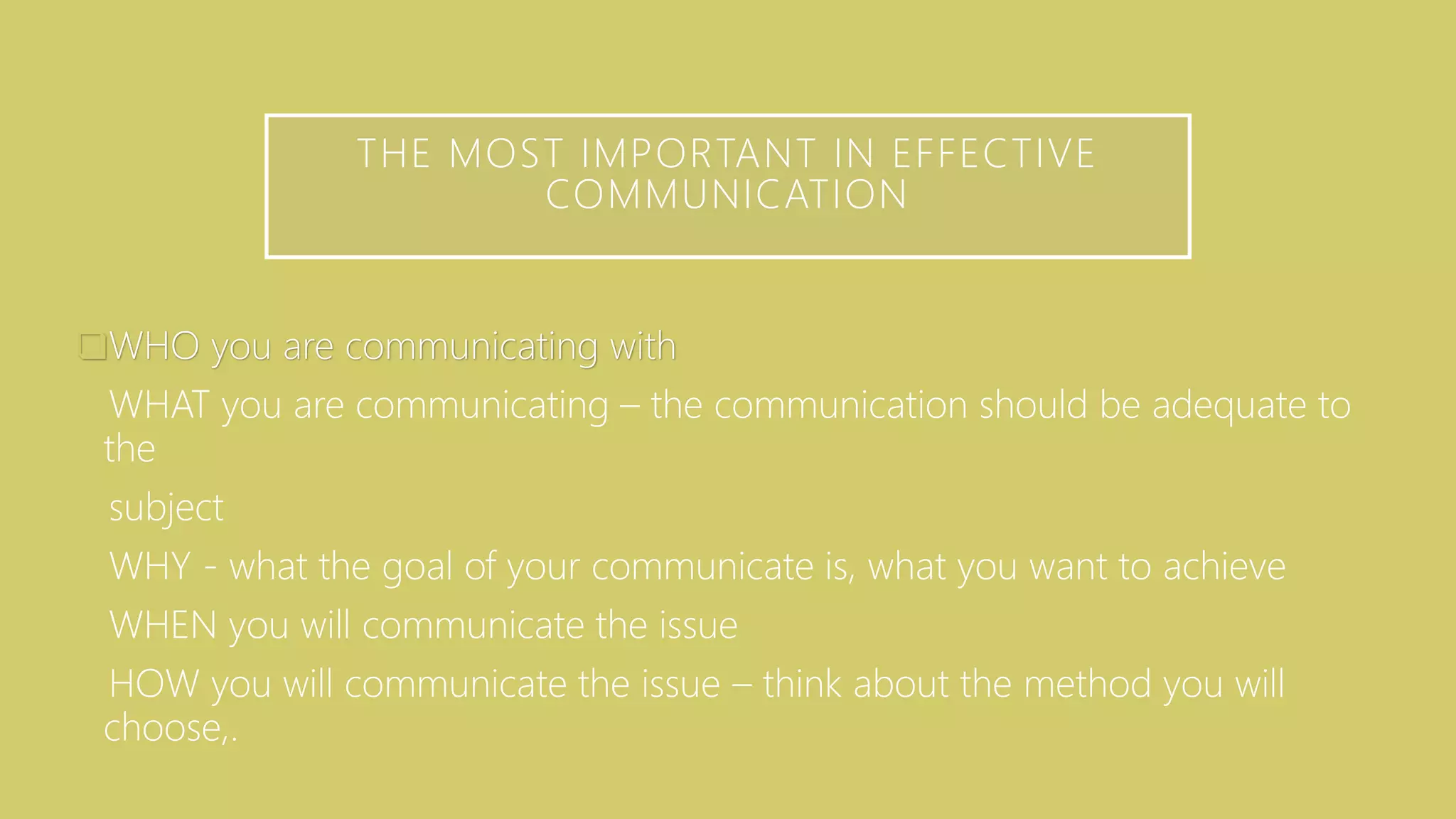The document discusses the key elements and types of communication. It begins with an activity to test message passing between students. It then defines communication and lists its key characteristics. The main types of communication are described as intrapersonal, interpersonal, group, public, and mass. Another activity involves students doing role plays demonstrating different communication scenarios. Finally, the core elements of any communication process are outlined as sender, receiver, message, channel, and feedback. Effective communication depends on understanding these elements.
